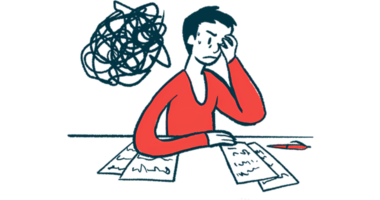Hypersensitivity and Parkinson’s: Making Sense of the Intense

“I’m nervous about this conference trip,” I said to Mrs. Dr. C. “We just moved into our new home and don’t have phones hooked up. What if something happens while I’m away?”
With a smile, Mrs. Dr. C responded, “I’m a strong New England woman. I’ll be OK. You have been looking forward to this for months.”
To put this into perspective, this was the late 1990s, a time when landline telephones were the standard and cellphones were still years from everyday use. Mrs. Dr. C could only wave me goodbye and wait for my return.
I let out a big sigh. “You’re right,” I conceded. “I’m just being overly concerned.”
I finished packing my overnight bag and was on the road headed to Boston, a long drive from our home. I had planned to stay with family overnight and then get up the next morning for the conference.
This was my chance to listen in person to Dr. Herbert Benson, a pioneer in mind-body medicine. His book “The Relaxation Response” was — and still is — a life-altering read. Benson postulated with scientific theory that anyone could use their minds to be calm and overcome the ravages of life’s most stressful moments.
As Benson began to talk, I felt an uncontrollable urge to leave, get in my car, and hurry back home. I kept rationalizing that the urge made no sense. I had invested time and finances to be present at this conference on mind-body health.
But the internal discomfort pulling me home got louder and louder, forcing me to leave. I picked up my stuff, stopped by my family’s home to say I wouldn’t be spending the night, and made the long drive home.
The entire drive was filled with not only a sense of urgency, but also foreboding. I had to get home because something was wrong, and my partner needed me.
When I walked in the door, I called out her name. Mrs. Dr. C responded, “I’m down here, in the basement.” As I headed down the old, rickety basement stairs, I was shocked to see water everywhere.
It was a scene out of “Fantasia,” with Mrs. Dr. C in the role of the sorcerer’s apprentice, bailing water into a bucket to haul upstairs and throw out the door. It wasn’t just a little water — it was halfway up my lower leg. Together, we bailed and hauled and finally with a sump pump got the water to recede.
I have always been hypersensitive and tuned into others’ feelings. It’s a talent I turned into a lifetime of clinical service.
But Parkinson’s disease has magnified my hypersensitivity in unexpected ways. The second dopamine center is responsible for monitoring sensory input in relation to system regulation. But with Parkinson’s, the process is broken. Now, it creates surges of intense sensory experiences every day.
To moderate these surges, I must be mindful throughout the day. I practice meditation for at least a full hour every day. I must calm down my Parkinson’s nervous system so that when the surge happens, the intensity is not so loud. It’s a preventive approach that works well — when I actually do it.
There are always differences between the design of treatment and its delivery. Meditation for advanced practitioners includes hypersensitivity. They are more intense experiences, but I’m also calmer in between.
Three intensity effects are at play, magnifying the sensory hypersensitivity experience: Parkinson’s, surges (seizures), and meditation. When all three come together, they lead to such intensity that they overwhelm my mind. I am unable to function. If I push myself through the hypersensitivity experience, it cascades. The result is a brainstorm of neural chaos.
To prevent this, I must pause and apply meditation at a moment’s notice in addition to daily routine practice. The old ways of grasping for any type of relief exasperate the problem. I instead must sit patiently and wait for the hypersensitivity surge to quiet down. This isn’t easy because the surge comes with “get up and do something” restless commands. It’s a nagging, relentless voice saying I should do more to make it go away. I must sit with both suffering and sacredness present in that uncomfortable moment.
In an article for Next Big Idea Club magazine, psychotherapist Britt Frank writes:
“You don’t need to make giant behavioral transformations to get unstuck—getting unstuck requires tiny micro-shifts, and those shifts compound rapidly. Before you know it, you’re in motion. Once you get going, all of that wonderful cognitive work suddenly becomes powerful.”
It’s simple but not easy to sit and breathe through the hypersensitivity moments. Doing this as a daily practice rewires the brain and improves my ability to live with Parkinson’s.
Note: Parkinson’s News Today is strictly a news and information website about the disease. It does not provide medical advice, diagnosis, or treatment. This content is not intended to be a substitute for professional medical advice, diagnosis, or treatment. Always seek the advice of your physician or another qualified health provider with any questions you may have regarding a medical condition. Never disregard professional medical advice or delay in seeking it because of something you have read on this website. The opinions expressed in this column are not those of Parkinson’s News Today or its parent company, Bionews, and are intended to spark discussion about issues pertaining to Parkinson’s disease.








Leave a comment
Fill in the required fields to post. Your email address will not be published.